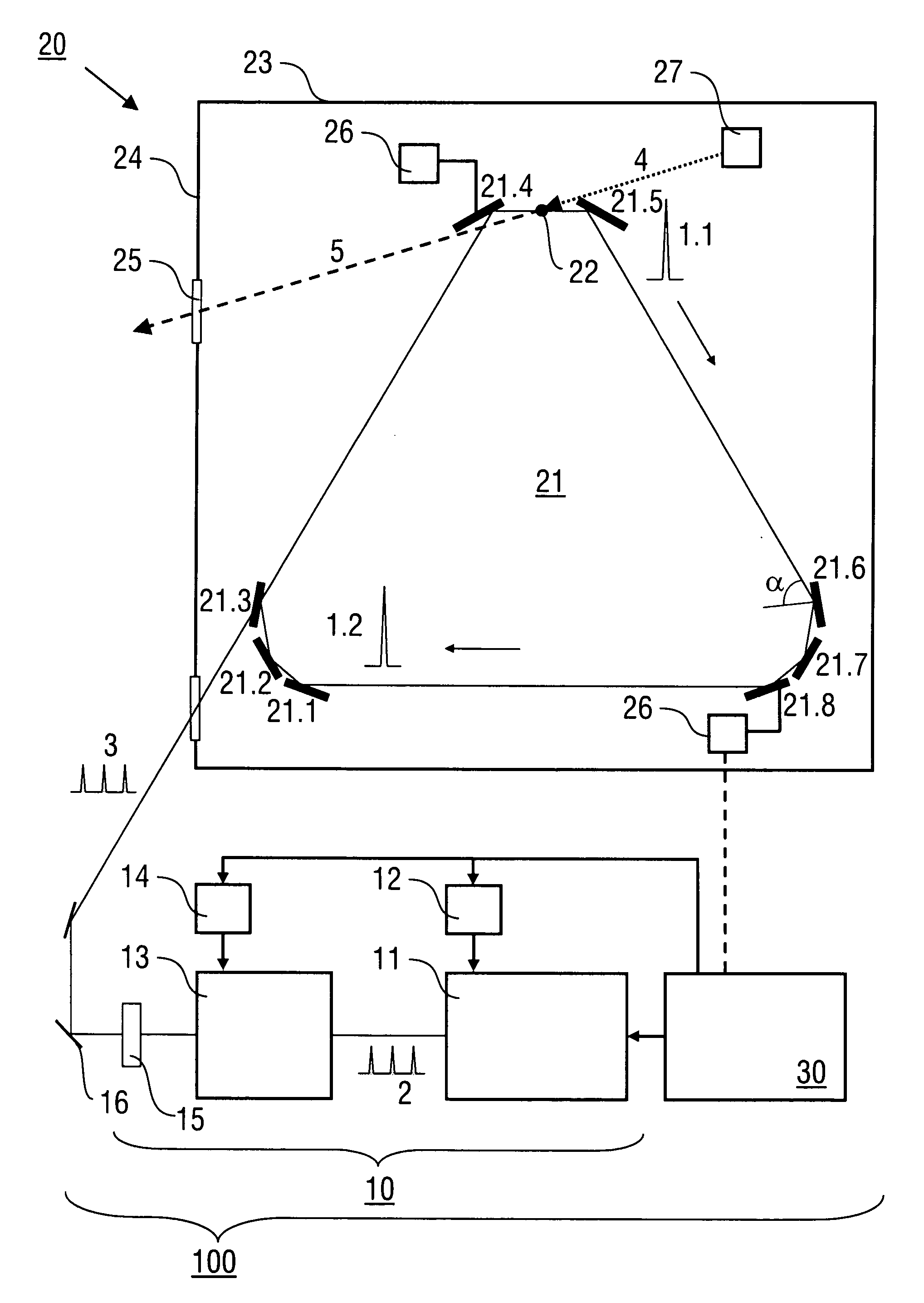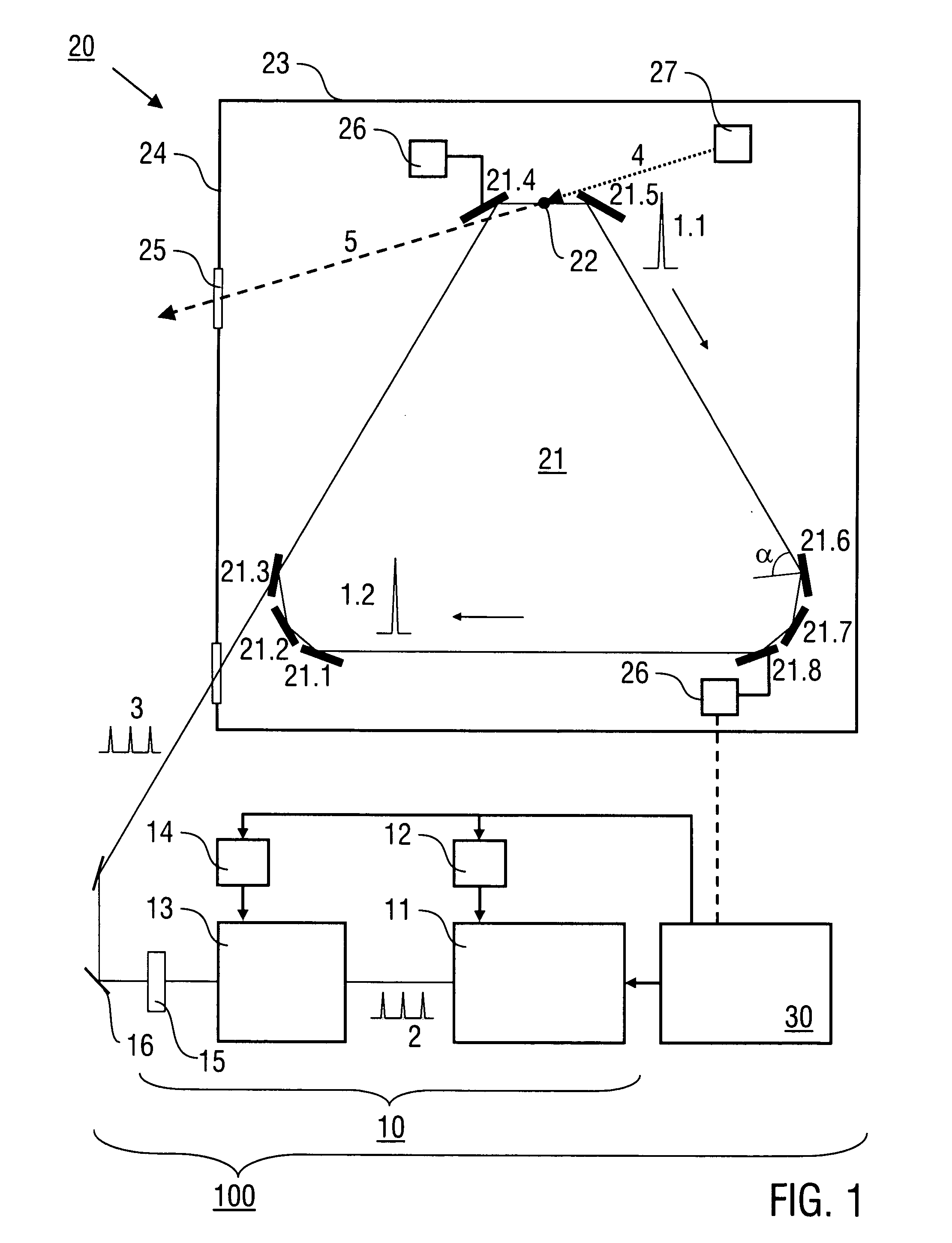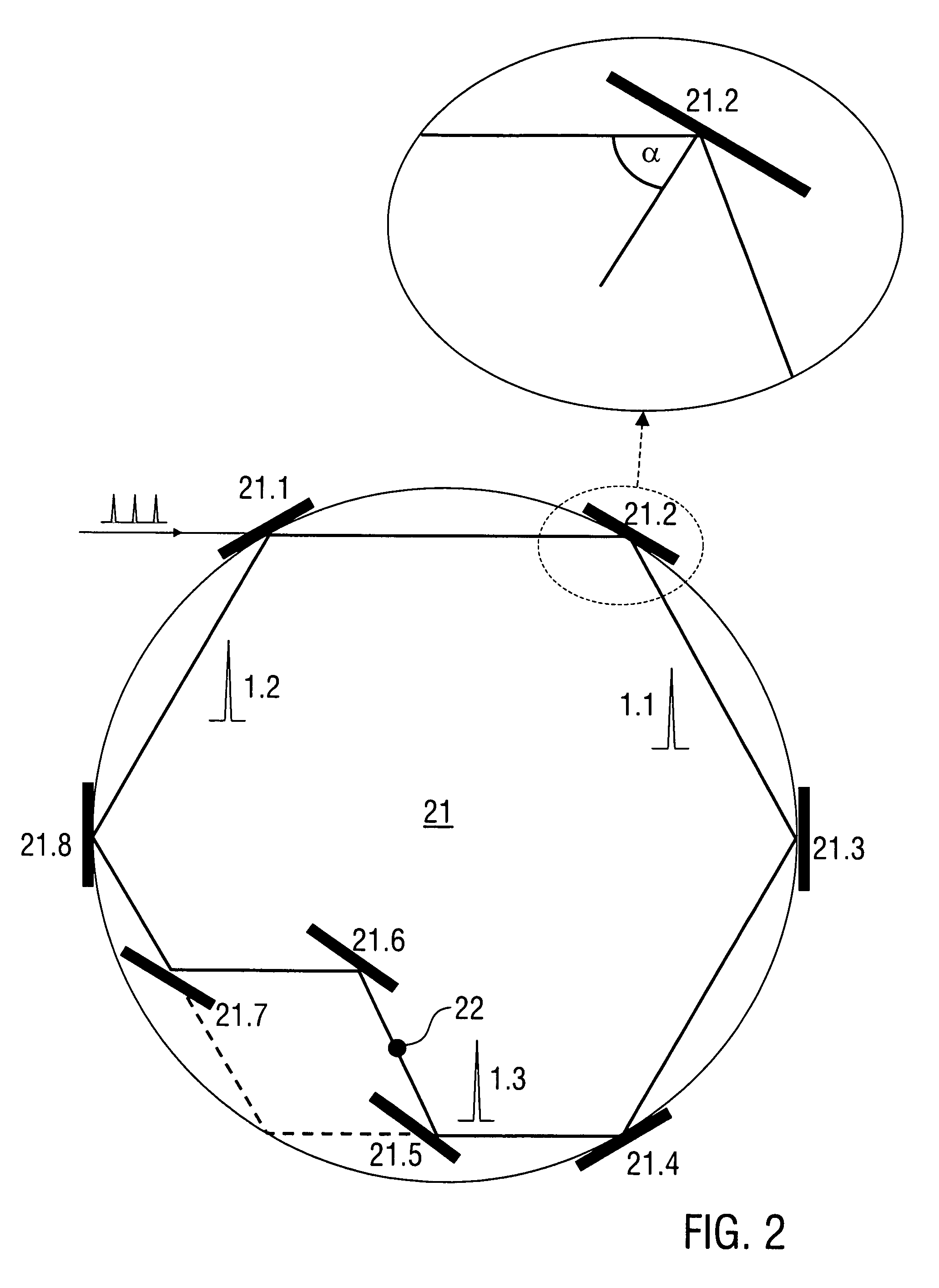Method and laser device for generating pulsed high power laser light
a laser light and laser light technology, applied in laser optical devices, laser details, electrical apparatus, etc., can solve the problems of optical non-linearity, limited circulating power, and limitation of circulating power, so as to reduce the reflectivity loss in the enhancement cavity, increase the average circulating power, and enhance the effect of the enhancement cavity
- Summary
- Abstract
- Description
- Claims
- Application Information
AI Technical Summary
Benefits of technology
Problems solved by technology
Method used
Image
Examples
Embodiment Construction
[0025]Embodiments of the invention are described in the following with exemplary reference to enhancement cavities having eight cavity mirrors. It is emphasized that the invention can be implemented in an analogue manner with a lower number, e.g. five to seven, or a larger number of cavity mirrors, e.g. nine or ten or even more. The cavity geometry and the angle of incidence at the cavity mirrors can be selected by experiment or by numerical design of the optical set-up based on available software solutions.
[0026]Preferred features of the invention are described for illustrating in particular the concepts of oblique incidence, irradiation with s-polarization, loading the enhancement cavity with at least two cavity pulses and passive repetition rate multiplication. Further features of the method of generating pulsed laser light and of the laser device, in particular with regard to the design and adjustment of an input coupling mirror, the synchronisation of the laser source device an...
PUM
 Login to View More
Login to View More Abstract
Description
Claims
Application Information
 Login to View More
Login to View More - R&D
- Intellectual Property
- Life Sciences
- Materials
- Tech Scout
- Unparalleled Data Quality
- Higher Quality Content
- 60% Fewer Hallucinations
Browse by: Latest US Patents, China's latest patents, Technical Efficacy Thesaurus, Application Domain, Technology Topic, Popular Technical Reports.
© 2025 PatSnap. All rights reserved.Legal|Privacy policy|Modern Slavery Act Transparency Statement|Sitemap|About US| Contact US: help@patsnap.com



